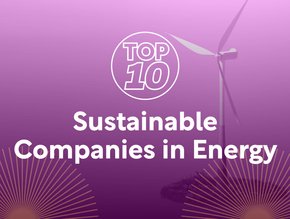Top 10 countries for carbon dioxide emissions

The top 10 countries account for 62% of global carbon emissions and 49% of methane emissions, according to new McKinsey research.
It found capital spending on physical assets for energy and land-use systems in the net-zero transition between 2021-2050 would amount to about $275trn, or $9.2trn per year on average, an annual increase of as much as $3.5trn from today.
Mckinsey forecasts the energy transition could result in a net gain of 15mn jobs, creating about 200mn jobs by 2050, in the context of a loss of about 185mn direct and indirect jobs. Poorer countries and those reliant on fossil fuels are most exposed to the shifts in a net-zero transition, although they have growth prospects as well.
Government and business need to act together with singular unity, resolve, and ingenuity, and extend their planning and investment horizons, the report finds.
Here are the top 10 countries by carbon emissions.
10: Iran
Iran has in place legislation to increase the share of renewables and clean power plants to at least 5% of the country's capacity until the end of 2021, but it remains a fossil fuel powerhouse. Its CO2 emissions have risen a staggering 240% since 1990.
Percentage of global CO2 emissions: 2%
09: South Korea
South Korea is a major energy importer, importing nearly all of its oil needs and ranking as the second-largest importer of LNG globally. It has set a target of reaching carbon neutrality by 2050 by substantially increasing the share of renewable energy sources, gradually phasing out coal, significantly improving energy efficiency and fostering the country’s nascent hydrogen industry.
Percentage of global emissions: 2%
08: Germany
Germany initiated the Energiewende back in 2010, a major plan for making its energy system more efficient, supplied mainly by renewable energy sources. The country has adopted a strategy for an energy pathway to 2050, which includes an accelerated phase-out of nuclear power by 2022.
Percentage of global emissions: 2%
07: Brazil
Brazil’s energy policies measure up well against the world’s most urgent energy challenges. Access to electricity across the country is almost universal and renewables meet almost 45% of primary energy demand, making Brazil’s energy sector one of the least carbon-intensive in the world. But there is still work to do.
Percentage of global CO2 emissions: 3%
06: Japan
Over the last decade, Japan has made substantial progress on the sustainable energy front. The country’s flair for innovation and technology base will play a vital role in developing the technologies needed to achieve its ambitions of achieving carbon-neutrality by 2050 - but like Brazil, it cannot afford to be complacent.
Percentage of global emissions: 3%
05: Indonesia
Indonesia’s imports of oil have rapidly increased in recent years and it is the world’s fourth-largest producer of coal and Southeast Asia’s biggest gas supplier. While the country is the largest producer of biofuels worldwide and is scaling up efforts to exploit its renewable energy potential, the demands from its huge energy-hungry population will continue to present challenges.
Percentage of global CO2 emissions: 3%
04: Russia
Despite the introduction of sanctions and prospect of further restrictions in the energy arena, Russia is a major player in global energy markets. It is one of the world’s top three crude producers, vying for the top spot with Saudi Arabia and the United States. Russia relies heavily on revenues from oil and natural gas, which in 2021 made up 45% of Russia’s federal budget, and needs to ramp up its sustainable energy policies.
Percentage of global CO2 emissions: 4%
03: India
There is a marked jump in emissions as we turn to India.
Energy consumption has more than doubled since 2000, propelled upwards by a growing population – soon to be the world’s largest – and a period of rapid economic growth. Near-universal household access to electricity was achieved in 2019, meaning that over 900mn citizens have gained an electrical connection in less than two decades. Its continued industrialisation and urbanisation will make huge demands of its energy sector - and policy makers.
Percentage of global CO2 emissions: 6%
02: United States
The energy policy landscape of the United States has fundamentally changed over the past decade. In many respects, the country is in a strong position to deliver a reliable, affordable and environmentally sustainable energy system, according to the IEA - but curtailing its emissions, twice that of India, remains a pressing challenge.
Percentage of global CO2 emissions: 12%
01: China
The Asian powerhouse remains in a league of its own, with coal demand and production capacity remaining stubbornly high. One in every four tons of coal used globally is burned to produce electricity in China.
On the bright side, between 2019 and 2024, China is set to account for 40% of global renewable capacity expansion.
It has recently set forth a 'dual carbon' national goal – reaching peak carbon emissions by 2030 and achieving carbon neutrality by 2060. But the changes can't come soon enough.
Percentage of global CO2 emissions: 26%






